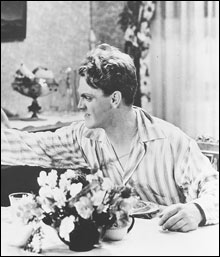Visiting Dublin recently, I was dismayed by a telling bit of sartorial sociology: Yankees caps outnumbered Red Sox caps by about 10 to one. Granted, the Irish aren’t all that keen on baseball, so this generalization was based on observing only about 11 hats. Nonetheless, it was distressing. Where was the love for what is, by all accounts, the most Irish city in America?
Nearly a third of Bostonians claim Irish ancestry, far and away the largest percentage of any American city. They came here in sudden, massive waves: impoverished rural refugees from the Great Famine of the 1840s, arriving as East Coast cities were in the thrall of democratic ferment, fired by roaring industry. And given Boston’s smallish size in contrast to a metropolis like New York, they’ve left a cultural mark disproportionate even to their large numbers. In this town — as Bruce Bolling, the first African-American president of Boston City Council, once winked to the Globe’s former Dublin bureau chief Kevin Cullen — “we’re all Irish by osmosis.”
Bolling spoke those words 20 years ago, immediately after his ascension to council president, at which point he “used his office and power to punish a political rival, maintaining a tradition that stretched back nearly a century, when Irish ward bosses used their clout to exact revenge against anyone who challenged the machine,” Cullen writes.
Two decades later, the Irish don’t have quite the lock on City Hall and Beacon Hill they once did. There’s still a Feeney and a Flaherty and a Murphy on the Boston City Council. But there’s also a LaMattina, an Arroyo, and a Yoon. In the Massachusetts State House, the Senate President is a Travaligni and the House Speaker is a DiMasi. City Hall has been controlled by a Menino since 1994.
In a city once known as “the next parish over” from Connaught, Irish emigrants are coming in ever fewer numbers to work in pubs and on paint crews; in fact, many are returning to the flush economy back home. Meanwhile, shamrock-bedecked South Boston has undergone blindingly rapid change. As recently as 1988, historian Thomas O’Connor could write that Southie “has survived with perhaps the fewest changes in its ethnic, social, and religious composition” as anywhere in Boston. Now, a two-bedroom condo there costs $500,000. Once-omnipotent pols like Billy Bulger and Tom Finneran have been laid low. The Littlest Bar is in ruins. A Southie-set flick like The Departed wins Best Picture? Big deal. It was directed by an Italian, and Jack Nicholson, playing a mobster based on Bulger’s brother Whitey, does so wearing a Yankees cap.
One hundred and sixty years after the blackest year of the famine, nearly half a century since John F. Kennedy rose to the highest office in the land, is the fabled potency of the Boston Irish becoming a distant memory?

THE “JIMMY ATTITUDE,” here represented by James Cagney, is a “blend of musicality and menace.”
|
What’s in a name?
First, there was Paddy. Penniless. Piteous. Dispossessed. A tattered tenant farmer, escaping a blighted homeland alongside millions more like him. “Most of them had never been three miles from their home,” says Peter Quinn, author of the personal and probing new essay collection Looking for Jimmy: A Search for Irish America (Overlook). “They’re from the most primitive agricultural society in Europe, and six weeks later they’re in the fastest industrializing cities in the world.”
The welcome was not warm. This man, with “neanderthal physical characteristics” (as the eugenicist Madison Grant put it), “the great upper lip, bridgeless nose, beetling brow with low-growing hair, and wild savage aspect,” represented a threat to the WASP elite in cities like Boston and New York. By the years after the Civil War (even though Irish brigades fought valorously for the Union), these teeming immigrant masses were looked upon in much the same light as the newly emancipated blacks.
One Thomas Nast cartoon, from 1876, shows Sambo and Paddy sitting in a scale, grinning dumbly at each other. North and South. White and black. Two “underclasses that weigh down the future of America’s recently reunited Anglo-Saxon republic,” Quinn writes. Visiting the United States in 1881, English historian Edward A. Freeman remarked, “This would be a grand land if only every Irishman would kill a Negro, and be hanged for it.”
But by the early years of the 20th century, things had changed. Paddy, who’d arrived in this country without money, without skills — “bereft,” Quinn writes, “of a usable past” — had found strength in numbers. And he had realized that “whoever the streets belong to gets to define what it takes to belong.” It wasn’t long before Paddy changed his name. Now he was Jimmy.
“Jimmy,” in Quinn’s formulation, is an amalgam of two archetypes: pug-faced Jimmy Cagney and Jimmy Walker, the singing, swinging Jazz Age mayor of New York. It was this new identity, he writes, that “personified Paddy’s transformation from mud-splattered, simpleminded, shillelagh-wielding spalpeen into skeptical, fast-talking urbanite who could never be mistaken for a greenhorn or rube.”